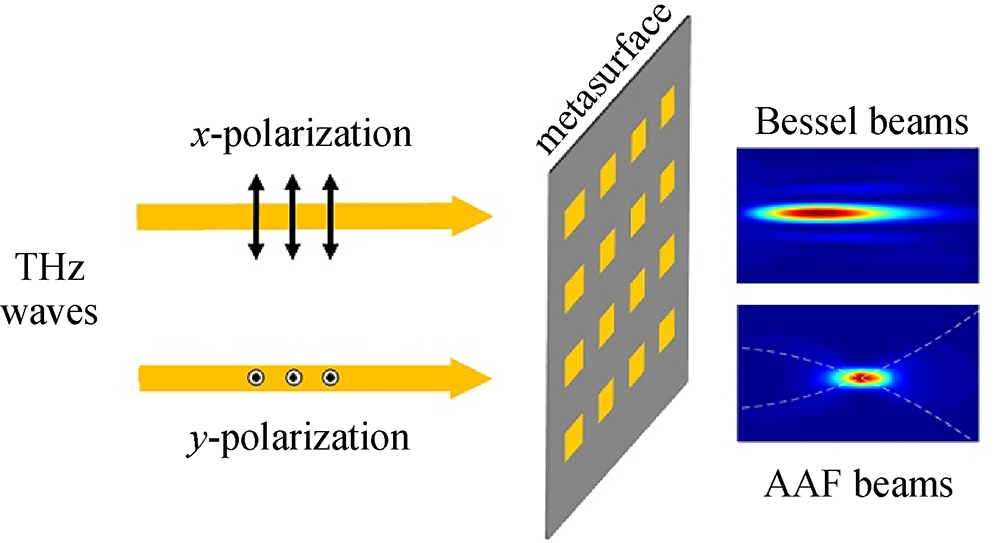To realize the desired dual non-diffractive THz beam generators, the meta-atoms of the designed metasurface are polarization-dependent rectangular-shaped silicon pillars on a silicon substrate, as schematically shown in Fig. 1(a). These anisotropic meta-atoms act as rectangular waveguides, allow the phases of the incident
x- and
y-polarized waves to be modulated separately [
53]. The commercial software CST MICROWAVE STUDIO is used to simulate the response of the lossless silicon meta-atoms (
nSi = 3.4496) for
x- and
y-polarized incident THz waves at 1 THz. The side lengths of the pillars
lx and
ly are from 30 to 135
mm, the height of the pillars is
h = 200
mm, and the period of the square unit cell is
p = 150
mm. From the simulation results, 64 meta-atoms in total are selected to achieve the phase modulation within the 0 to 2π range at an interval of π/4 for incident THz waves with
x- and
y-polarized incidences, that is, 8 side lengths are used for each polarization. To illustrate the design procedure, we can consider putting the 64 meta-atoms in an 8 × 8 table, where the row of the table corresponds to the phase delay for
x-polarized incident light (0, π/4, π/2, 3π/4, π, 5π/4, 3π/2, 7π/4) and the column corresponds to the phase delay for
y-polarized incident light (0, π/4, π/2, 3π/4, π, 5π/4, 3π/2, 7π/4). The phase delays
ϕx and
ϕy required at point (
x,
y) can be calculated as described later, and by matching this set of data to the closest position in the table, the meta-atom that should be selected at point (
x,
y) can be determined. Figure 1(b) shows a scanning electron microcopy (SEM) image of the fabricated metasurface.









